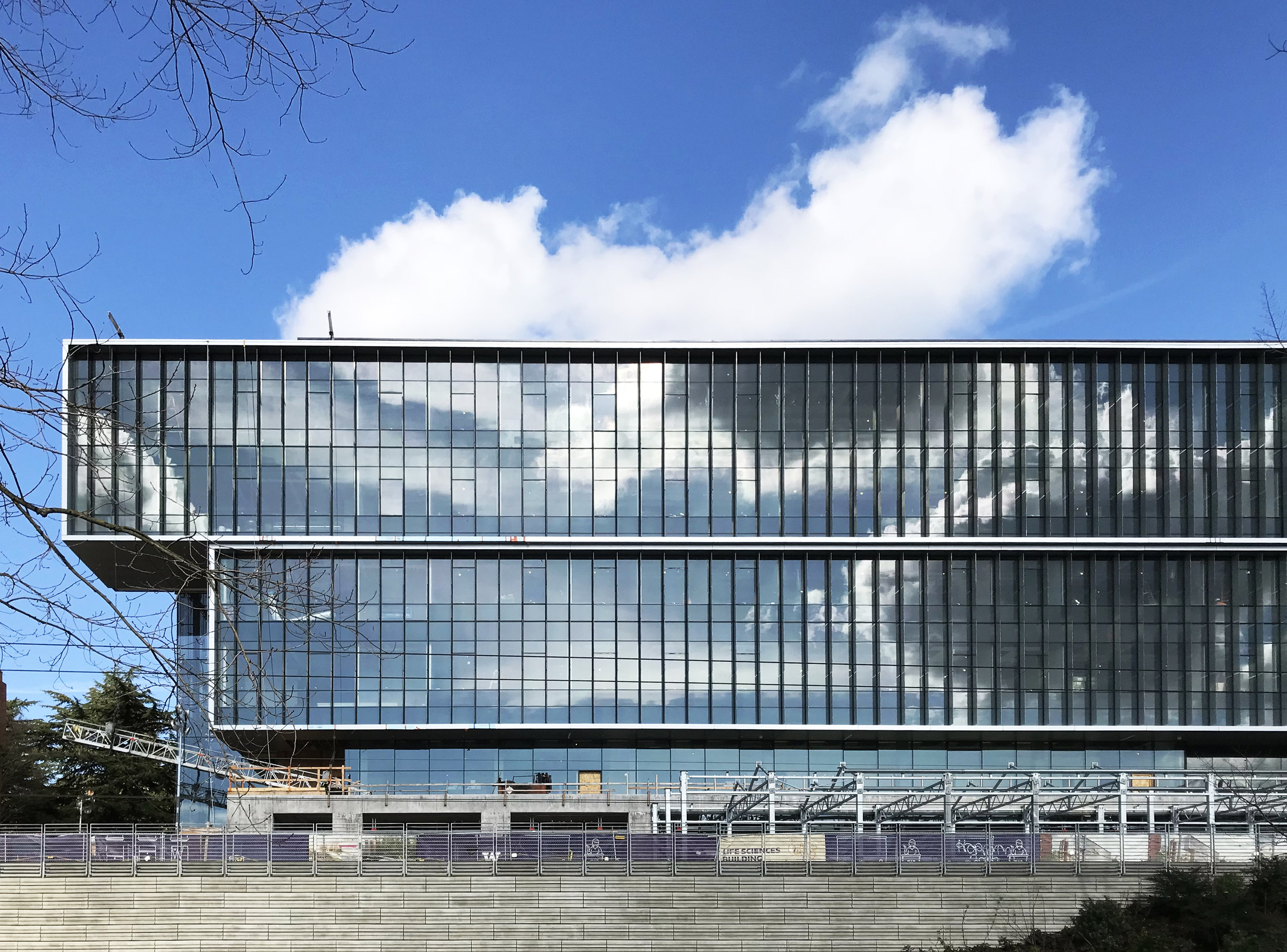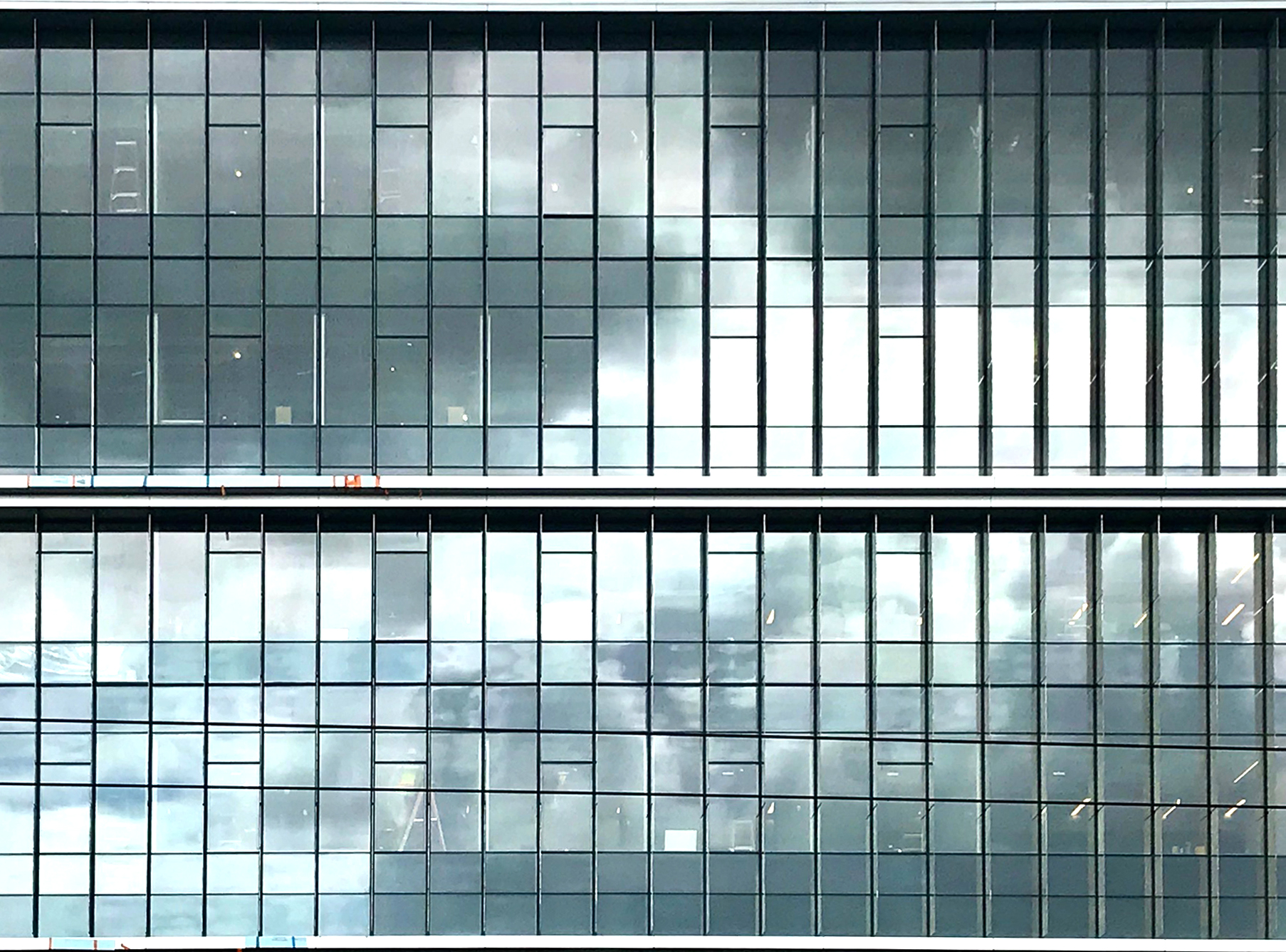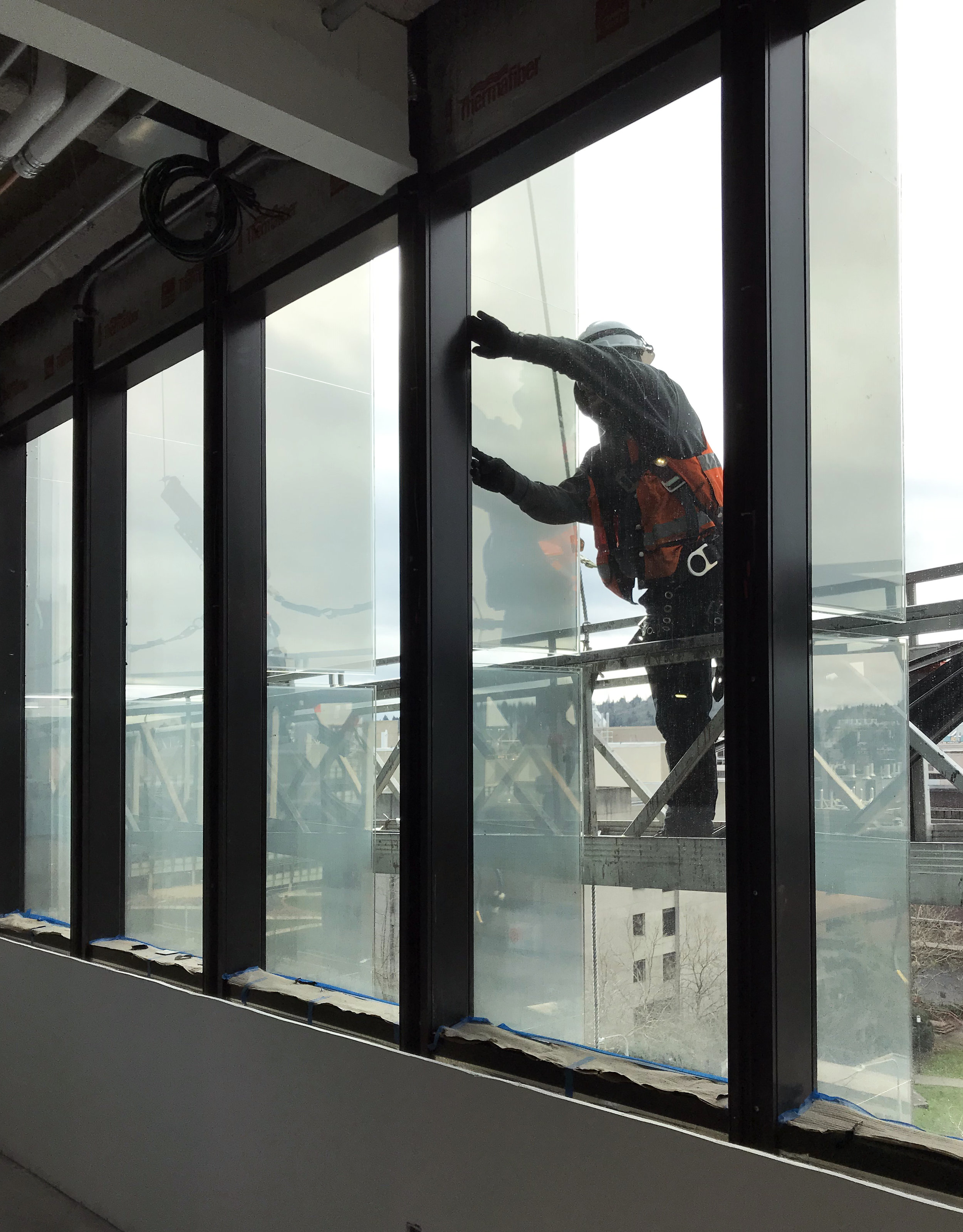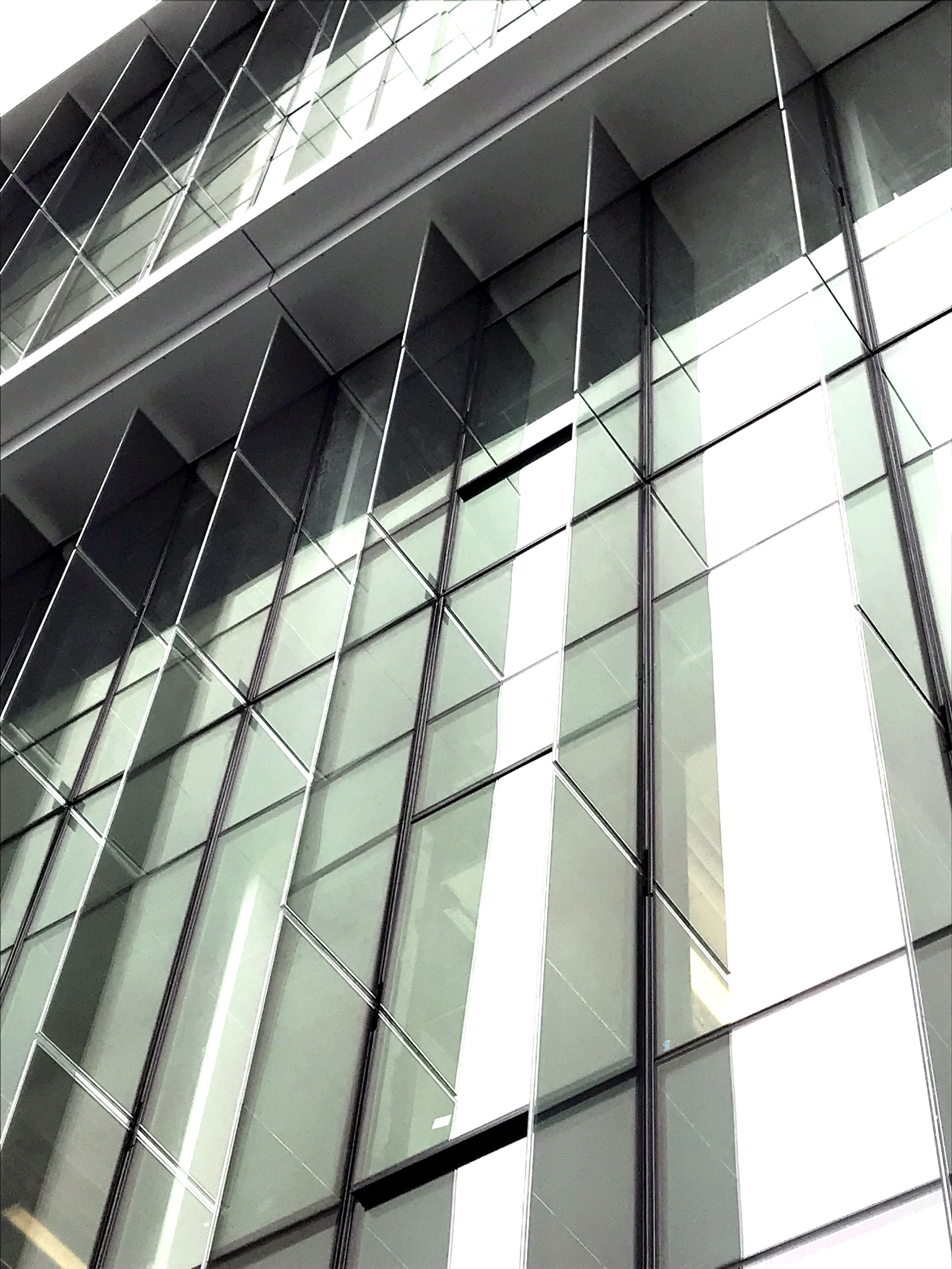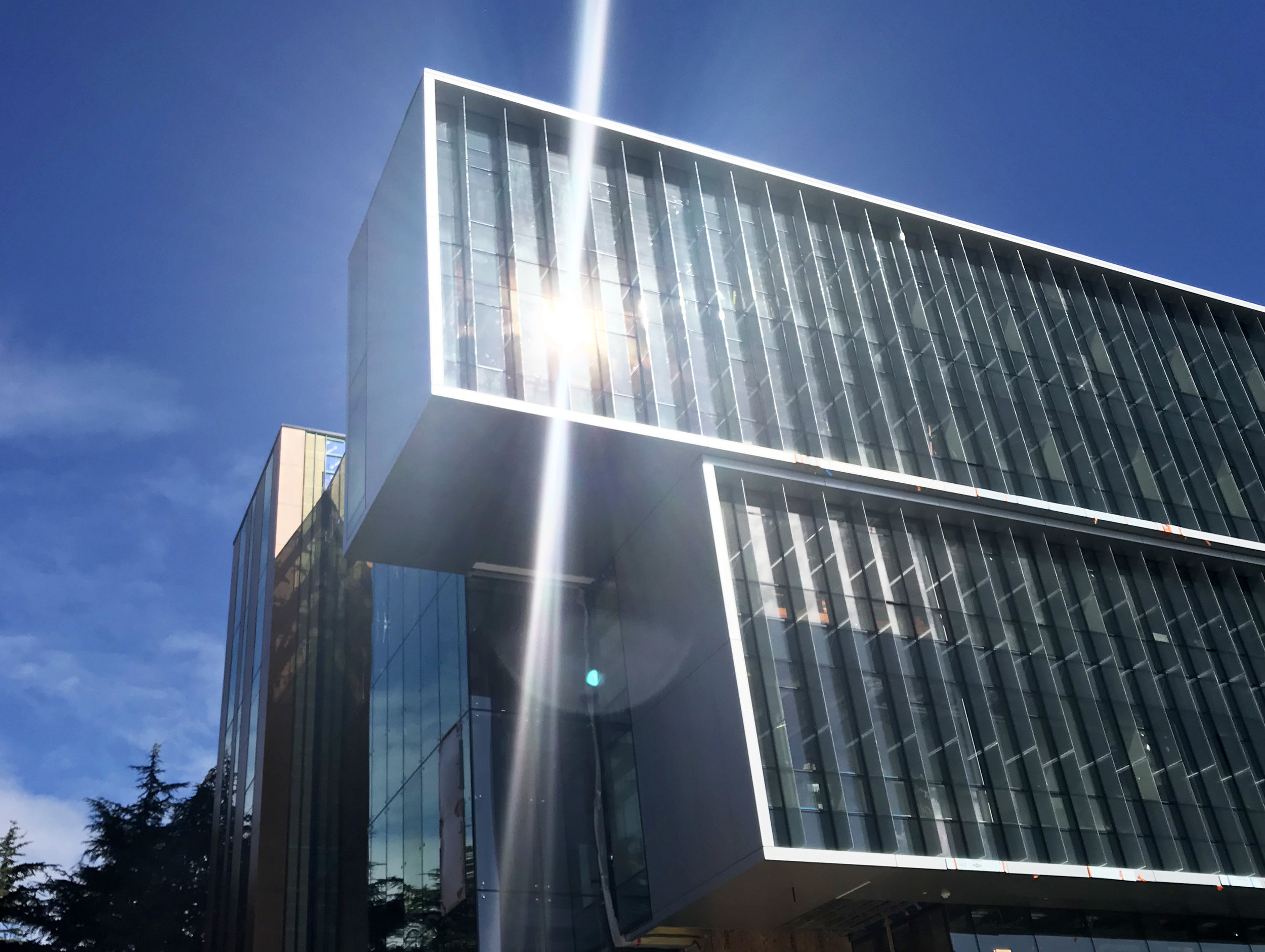The building's south wall is partially comprised of a thin film of solar cells, or "building integrated photovoltaics" (BIPVs), placed within vertical glass segments called "fins". The surface of the BIPV glass fins that face south use the energy from the sun to generate electricity. This electricity is then fed to city's energy grid. This technology will produce enough electricity to light all 12,400 square feet of open and private offices along the perimeter of levels 2-5 throughout the year.
Northwest orientation of glass solar fins: shading reduces solar heat gain from low afternoon sun in summer
Southeast orientation of glass solar fins: produce energy from sunshine even with overcast skies
The innovation in technology is a collaboration of UW Solar students, the UW Biology Department, Perkins+Will (architect), Skanska (contractor), AEI (electrical designer), and VECA (electrical subcontractor).
University of Washington Solar Student Group on a construction tour witnessing installation of innovative sustainable systems they helped initiate during design and fund with grants.
Solar glass fins with electrical connections stored before installation
Glass solar fin installation in progress
12,260 kWh
The amount of electricity generated by the BIPV fins.
12,400 SF
Total area of offices with lighting offset by BIPV fins
6,412 SF
Total area of fins.
496
Total number of BIPV fins.
8
Number of BIPV fins stacked in a vertical orientation
2
Number of BIPV fins stacked to create a module
10%
Transparency of BIPV fins. Options of transparency are 10%, 20%, and 30% with 10% producing the most electricity and solar heat gain reduction.
Amorphous Silicone
Solar cells that are more effective than crystalline silicone in diffuse light conditions such as overcast skies, and are less obstructive to views. The thin solar film is encapsulated within 2 pieces of tempered glass and can easily be integrated into the architectural design.
Custom Curtainwall Mullion
The BIPV fins are supported within a Kawneer curtainwall vertical mullion custom designed to support the glass, encapsulate the junction box electrical connection, and provide a cap on the interior that can be snapped off for maintaining electrical conduit running vertically up to the ceiling.
110,000 kWh
The amount of energy generated by Rooftop solar panels.
122,260 kWh
Total modeled energy generated by both the BIPV fins and the Rooftop solar panels.







